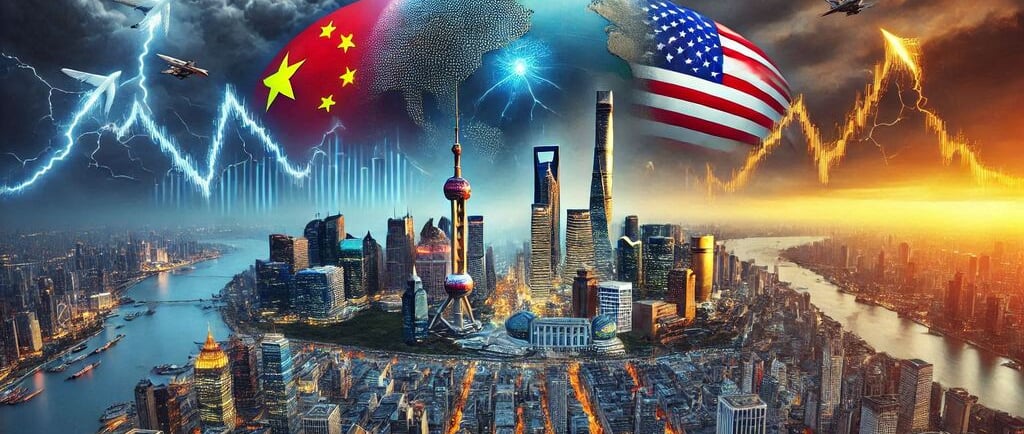Let us collaborate to foster global growth and development together.
The Impact of Trade Dynamics Between China, India, and the USA on Global Markets
Discover how trade relationships between China, India, and the USA shape global markets, influencing supply chains, economic policies, and business opportunities worldwide.
COMPARATIVE INSIGHTS
11/3/20243 min read


The Impact of Trade Dynamics Between China, India, and the USA on Global Markets
Meta Description
Discover how trade relationships between China, India, and the USA shape global markets, influencing supply chains, economic policies, and business opportunities worldwide.
Introduction
Trade is the lifeblood of the global economy, and few relationships impact it more than the interactions between China, India, and the USA. Together, these economic powerhouses contribute significantly to world trade volumes, shaping industries, supply chains, and even geopolitics. But how do their trade dynamics influence global markets? Let’s dive into the intricate interplay of trade between these nations and what it means for businesses worldwide.
Why Are Trade Relations Between These Nations Critical?
Global Economic Influence
China, India, and the USA together account for a substantial portion of global GDP. Their combined economic activities ripple through global markets, influencing everything from commodity prices to technological advancements.
Complementary Economies
China: Known as the world’s factory, it specializes in manufacturing and exports.
India: A rising IT and service sector hub, with growing manufacturing capabilities.
USA: A dominant player in innovation, technology, and consumer markets.
Their unique strengths create opportunities for collaboration and competition, driving global economic growth.
Key Trade Trends Between China, India, and the USA
USA-China Trade Relations
Despite political tensions, trade between the USA and China remains robust. Key trends include:
Electronics Dominate: The USA imports vast amounts of electronics and machinery from China.
Agricultural Exports: China is a significant buyer of U.S. agricultural products like soybeans and pork.
Technology Restrictions: Recent restrictions on tech exports reflect ongoing strategic competition.
India’s Role in Global Trade
India is positioning itself as a key trading partner for both nations:
Pharmaceutical Exports: India’s generic drugs and vaccines are in high demand worldwide.
Textiles and Apparel: A major export category for India, especially to the USA.
IT Services: India’s outsourcing industry continues to thrive, catering to both U.S. and Chinese companies.
Triangular Trade Opportunities
The interaction of all three nations fosters unique opportunities:
India’s Supply Chain Shift: Companies diversifying away from China are exploring India as an alternative manufacturing hub.
China’s Tech Partnerships with India: Despite border tensions, tech collaboration persists in fields like app development.
U.S. Investments in Emerging Markets: Both India and China attract significant U.S. investments in infrastructure and startups.
How Trade Dynamics Impact Global Markets
Supply Chains
Trade policies between these nations heavily influence global supply chains. For example:
China’s Dominance: Disruptions in Chinese manufacturing, such as during the pandemic, ripple across the globe.
India’s Emergence: India’s growing role as a supply chain partner diversifies global risks.
Commodity Markets
China’s demand for raw materials like iron ore and India’s increasing energy needs create significant shifts in global commodity prices. The USA, as a major energy producer, benefits from these demands.
Geopolitical Impacts
Tariffs, trade wars, and diplomatic policies between these countries often have far-reaching consequences. Businesses must stay informed to navigate potential disruptions.
Tips for Businesses Navigating These Dynamics
Diversify Supply Chains
Relying on one country for manufacturing or resources can be risky.
Consider India or Southeast Asia as alternative hubs to China.
Monitor Trade Policies
Regularly update your understanding of tariffs and export regulations.
Use resources like WTO Trade Database for accurate data.
Leverage Technology and Data
Tools like AI-driven market analysis can help predict trade trends.
Blockchain ensures transparency and efficiency in global trade logistics.
Strengthen Regional Partnerships
Collaborate with local partners in target markets to navigate cultural and regulatory differences effectively.
Real-Life Examples of Trade Dynamics in Action
Example 1: The Semiconductor Shortage
During the global semiconductor shortage, the USA relied heavily on Chinese manufacturers while exploring Indian alternatives. This event highlighted the importance of diversified supply chains.
Example 2: India’s Pharma Boom
When the USA faced a healthcare crisis, India’s pharmaceutical industry stepped in, exporting life-saving drugs and vaccines globally.
Internal and External Resources
Internal Links
Learn more about Strategic Supply Chain Optimization.
Explore our guide on Navigating Geopolitical Trade Risks.
External Links
Gain insights from the International Trade Administration.
Stay updated with trends from the World Economic Forum.
Conclusion
The trade dynamics between China, India, and the USA are shaping the future of global markets. Their interconnected economies present both opportunities and challenges, making it crucial for businesses to stay informed and agile. By understanding these relationships and leveraging strategic insights, you can position your business to thrive in an ever-changing global landscape.
What are your thoughts on these trade dynamics? Share your perspectives in the comments below or explore our related articles to deepen your understanding of international trade!
Innovation
Cutting-edge solutions for industrial efficiency and productivity.
© 2024. All rights reserved.


